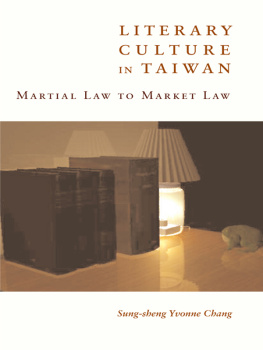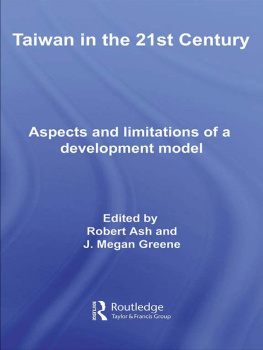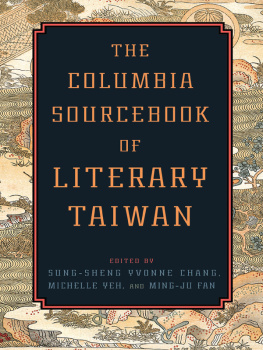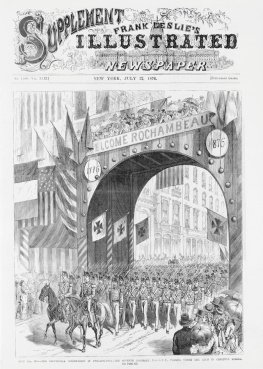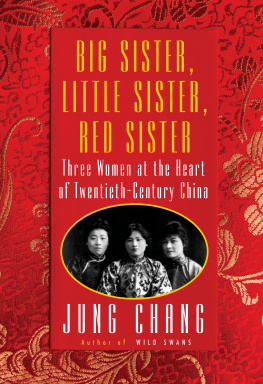Doris Chang - Womens Movements in Twentieth-Century Taiwan
Here you can read online Doris Chang - Womens Movements in Twentieth-Century Taiwan full text of the book (entire story) in english for free. Download pdf and epub, get meaning, cover and reviews about this ebook. year: 2010, publisher: University of Illinois Press, genre: Politics. Description of the work, (preface) as well as reviews are available. Best literature library LitArk.com created for fans of good reading and offers a wide selection of genres:
Romance novel
Science fiction
Adventure
Detective
Science
History
Home and family
Prose
Art
Politics
Computer
Non-fiction
Religion
Business
Children
Humor
Choose a favorite category and find really read worthwhile books. Enjoy immersion in the world of imagination, feel the emotions of the characters or learn something new for yourself, make an fascinating discovery.

- Book:Womens Movements in Twentieth-Century Taiwan
- Author:
- Publisher:University of Illinois Press
- Genre:
- Year:2010
- Rating:3 / 5
- Favourites:Add to favourites
- Your mark:
- 60
- 1
- 2
- 3
- 4
- 5
Womens Movements in Twentieth-Century Taiwan: summary, description and annotation
We offer to read an annotation, description, summary or preface (depends on what the author of the book "Womens Movements in Twentieth-Century Taiwan" wrote himself). If you haven't found the necessary information about the book — write in the comments, we will try to find it.
Womens Movements in Twentieth-Century Taiwan — read online for free the complete book (whole text) full work
Below is the text of the book, divided by pages. System saving the place of the last page read, allows you to conveniently read the book "Womens Movements in Twentieth-Century Taiwan" online for free, without having to search again every time where you left off. Put a bookmark, and you can go to the page where you finished reading at any time.
Font size:
Interval:
Bookmark:

Twentieth-Century Taiwan
Twentieth-Century Taiwan

 This book is printed on acid-free paper.
This book is printed on acid-free paper.1544 | Portuguese sailors named Taiwan Ilha Formosa (Beautiful Island). Before the arrival of European explorers and Chinese immigrants, Taiwans original inhabitants were Malayo-Polynesian indigenes. |
1624 | Dutch colonization of southern Taiwan; migrant workers and merchants from coastal Southeastern China are encouraged to settle in Taiwan in large numbers. |
1662 | Koxinga (Zheng Chenggong) of Ming China captures Taiwan from the Dutch and sets up an exile government on Taiwan after fleeing the Manchu (Qing) conquest of China. |
1683 | Qing forces from China seize Taiwan. |
1885 | Taiwan becomes a province of Qing China. |
1895 | Japan defeats Qing China in the first Sino-Japanese War. China cedes Taiwan to Japan pursuant to the Treaty of Shimonoseki. |
192134 | Taiwanese elites establish the Taiwan Cultural Association in 1921 and participate in the petition movement for the establishment of a Taiwan parliament within the legal framework of imperial Japans Meiji constitution. Feminist discourses and autonomous womens movements emerge (192031). |
1927 | Advocates for a Taiwan parliament establish the Taiwan Populist Party. |
1928 | Hsieh Hsueh-hung and others establish the Taiwan Communist Party. 193745 The second Sino-Japanese War; Taiwanese are recruited into Japanese armed forces during the imperialization movement. |
1945 | After Japans surrender, Taiwan is brought under the control of the Chinese Nationalist (Kuomintang) government of the Republic of China (ROC) headed by Chiang Kai-shek. |
1947 | Mass protest during the February 28th Incident leads to the Kuomintang governments massacre of 20,000 Taiwanese civilians and political activists. |
1949 | Chinese Communist troops defeat the Kuomintang in the Chinese civil war. The Kuomintang transfers its government and troops from mainland China to Taiwan and imposes martial law on the island. Chairman Mao Zedong of the Chinese Communist Party declares the creation of the Peoples Republic of China (PRC) on the mainland. |
194953 | The Kuomintang government on Taiwan implements a land reform program to transfer land ownership to tenant farmers. |
1954 | The United States and Taiwan establish a Mutual Defense Treaty. |
1960 | Democracy activist Lei Chen is incarcerated. |
1964 | Peng Ming-min, professor of political science at National Taiwan University, is arrested for advocating Taiwan independence and challenging the Kuomintangs reunification policy with mainland China. |
1971 | The United Nations expels the ROC diplomats from Taiwan and replaces them with representatives from the PRC on mainland China. |
1972 | Hsiu-lien Annette Lu launches the autonomous womens movement in postwar Taiwan. |
1975 | ROC President Chiang Kai-shek dies. |
1978 | Chiang Kai-sheks eldest son, Chiang Ching-kuo, becomes the ROC president on Taiwan. |
1979 | The United States switches its diplomatic recognition from the ROC government on Taiwan to the PRC government on mainland China. In order to safeguard Taiwans security vis--vis the PRC, the U.S. Congress passes the Taiwan Relations Act. Democracy activists stage a mass rally in the city of Kaohsiung against the Kuomintangs authoritarian rule and Taiwans diplomatic isolation. |
1980 | Eight dissident leaders of the Kaohsiung incident, including Hsiu-lien Annette Lu, are court-martialed and sentenced to long prison terms. |
Font size:
Interval:
Bookmark:
Similar books «Womens Movements in Twentieth-Century Taiwan»
Look at similar books to Womens Movements in Twentieth-Century Taiwan. We have selected literature similar in name and meaning in the hope of providing readers with more options to find new, interesting, not yet read works.
Discussion, reviews of the book Womens Movements in Twentieth-Century Taiwan and just readers' own opinions. Leave your comments, write what you think about the work, its meaning or the main characters. Specify what exactly you liked and what you didn't like, and why you think so.

